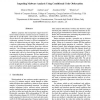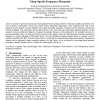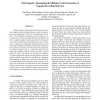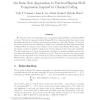85 search results - page 2 / 17 » Mimimorphism: a new approach to binary code obfuscation |
NDSS
2008
IEEE
13 years 11 months ago
2008
IEEE
Malware programs that incorporate trigger-based behavior initiate malicious activities based on conditions satisfied only by specific inputs. State-of-the-art malware analyzers ...
CORR
2011
Springer
13 years 6 days ago
2011
Springer
Abstract- In order to prevent detection and evade signature-based scanning methods, which are normally exploited by antivirus softwares, metamorphic viruses use several various obf...
ACSAC
2006
IEEE
13 years 11 months ago
2006
IEEE
Modern malware often hide the malicious portion of their program code by making it appear as data at compiletime and transforming it back into executable code at runtime. This obf...
ICSM
2009
IEEE
13 years 12 months ago
2009
IEEE
To defeat current commercial antivirus software, the virus developers are employing obfuscation techniques to create mutating viruses. The current antivirus software cannot handle...
DCC
2004
IEEE
14 years 4 months ago
2004
IEEE
We introduce three new innovations for compression using LDPCs for the Slepian-Wolf problem. The first is a general iterative Slepian-Wolf decoding algorithm that incorporates the...




